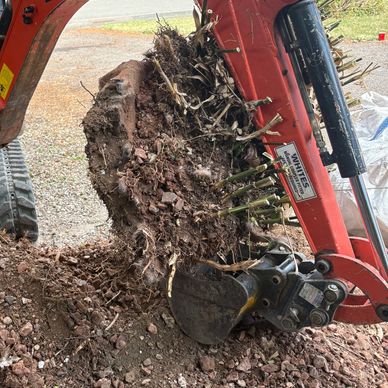Chenviro Bamboo Removal Services
Controlling Invasive Bamboo
Bamboo Herbicide Eradication Programme
Controlling Invasive Bamboo

Managing invasive bamboo can be exceptionally challenging, largely due to the limited effectiveness of commonly available herbicides.
For optimal results, it is highly recommended to engage a professional contractor like Chenviro, which possesses the specialized knowledge and expertise necessary for effective management and eradication.
At Chenviro we have thoroughly researched the most effective eradication techniques and concluded that although management with herbicides can be very effective, excavation is the fastest and most reliable method for completely removing bamboo from your property.
Chenviro offers comprehensive herbicide management or excavation services tailored for bamboo infestations of all sizes. Our processes include the following:
Bamboo Excavation
Bamboo Herbicide Eradication Programme
Controlling Invasive Bamboo

For the immediate removal of bamboo, particularly when a developer is eager to start construction, excavation and removal becomes a necessary approach. To enhance effectiveness, the most strategic method involves applying herbicides several weeks prior to excavation. This allows the chemicals to penetrate the root system, weakening the plant before removal and killing off any running rhizomes that may have spread unnoticed.
After the excavation and removal of bamboo, regular monitoring of the site is advisable. This vigilance helps detect any potential regrowth, allowing for timely application of herbicides, or a hand tool excavation if necessary.
While excavation may entail a higher initial cost compared to other methods, it is often the most effective and efficient solution for managing invasive bamboo and enabling a quicker path to construction.
And for property owners, the fastest way to safeguard their investments while maintaining the integrity of their landscape.
Bamboo Herbicide Eradication Programme
Bamboo Herbicide Eradication Programme
Bamboo Herbicide Eradication Programme

Excavation and removal may not always be an option, therefore we offer tailored herbicide treatment plans.
Our treatment programme consist of up to 8 herbicide treatments over the course of 4 years to achieve complete eradication.
Typically, this method is less expensive compared to more invasive removal techniques.
Treatment can be applied directly to the rhizomes, reducing the risk of spreading bamboo to new areas.
This helps mitigate damage to buildings and infrastructure from bamboo growth.
However achieving significant results can take many years, particularly with established culms.
Strategies that rely solely on herbicides require at least two years of monitoring after signs of growth have ceased.
Herbicide treatment is not recommended for areas planned for future construction or soil disturbance.
Ongoing construction cannot take place in areas still affected by bamboo; risks associated with landscaping treated soils, such as possible regrowth, should be communicated to clients.
Chenviro offer a 5 year guarantee with all of our Bamboo removal contracts.
Contact us today to find out how we can help.
Chenviro
Copyright © 2025 C H ENVIRO LTD - All Rights Reserved.
